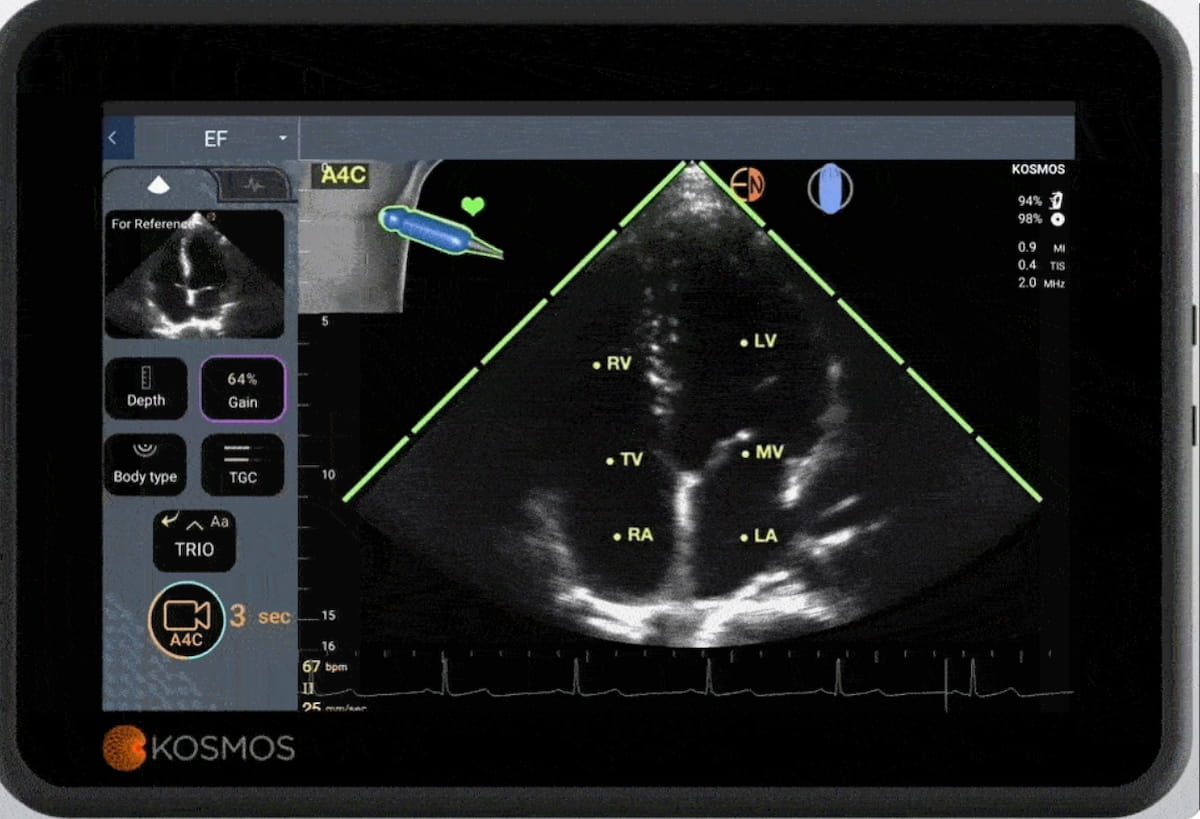Cardiac Ultrasound Update: FDA Clears Software with 45 Automated Parameters for Echocardiographic Analysis
Strain imaging analysis is one of the automated parameters included in the newly FDA-cleared Us2.v2 software for adjunctive review of echocardiographic images.
In what may provide a boost for streamlining cardiac ultrasound workflows, the Food and Drug Administration (FDA) has granted 510(k) clearance for the Us2.v2 software (Us2.ai), which reportedly provides 45 automated parameters for adjunctive assessment of echocardiographic images.
Key aspects of the Us2.v2 software include strain imaging assessment, regional strain analysis, aortic stenosis measurement as well as analysis of left and right atrial and ventricular linear dimensions, according to Us2.ai.
The newly FDA-cleared Us2.v2 software reportedly provides 45 automated parameters for adjunctive assessment of echocardiographic images. (Image courtesy of Us2.ai.)

Emphasizing that the software’s real-time automated capabilities reduce the variability that can occur with human assessment, Us2.ai said the Us2.v2 software also enhances workflow with explainable artificial intelligence (AI) output and streamlined reporting.
“By offering advanced capabilities that significantly enhance both precision and efficiency of echocardiographic analysis, this innovation dramatically reduces analysis time thereby speeding up clinical workflow. This is particularly helpful in clinical states that require additional imaging parameters such as strain, or are challenged by variability in interpretation such as aortic stenosis, said Madhav Swaminathan, M.D., a past president of the American Society of Echocardiography (ASE) and an associate professor of anesthesiology at Duke University Medical Center in Durham, N.C.
Could AI-Powered Abbreviated MRI Reinvent Detection for Structural Abnormalities of the Knee?
April 24th 2025Employing deep learning image reconstruction, parallel imaging and multi-slice acceleration in a sub-five-minute 3T knee MRI, researchers noted 100 percent sensitivity and 99 percent specificity for anterior cruciate ligament (ACL) tears.
The Reading Room: Artificial Intelligence: What RSNA 2020 Offered, and What 2021 Could Bring
December 5th 2020Nina Kottler, M.D., chief medical officer of AI at Radiology Partners, discusses, during RSNA 2020, what new developments the annual meeting provided about these technologies, sessions to access, and what to expect in the coming year.
Meta-Analysis Shows Merits of AI with CTA Detection of Coronary Artery Stenosis and Calcified Plaque
April 16th 2025Artificial intelligence demonstrated higher AUC, sensitivity, and specificity than radiologists for detecting coronary artery stenosis > 50 percent on computed tomography angiography (CTA), according to a new 17-study meta-analysis.